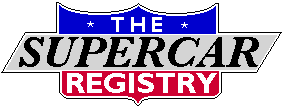

Dedicated to the Promotion and Preservation of American Muscle Cars, Dealer built Supercars and COPO cars. |
|
|||||||
| Register | Album Gallery | Thread Gallery | FAQ | Community | Calendar | Become a Paid Member | Today's Posts | Search |
|
|
Thread Tools | Display Modes |
|
#1
|
|||
|
|||
|
I have posted this information already on 2 other forums but thought it was important for any novices and other experienced people to see. I hope this may alert others to ask question prior to making any purchase even though what looks to be full documentation may be presented to authenticate a vehicle. This was was not being sold but was presented at a car show as a 1 of 2 produced with an L72 and automatic transmission in. A 1966 Impala SS. I was asked to review some docs for authenticity and although there are many telltale signs I did a full review to help others.
The recent post inquiring about the authenticity of documents purported to substantiate a 1966 Impala SS 427/425 HP Automatic Trans ignited much thought and anticipation among us. I thought it may be a good lesson for those not very familiar with Document authenticating and some more experienced to review what we look for: I have attached a copy with approval of the window sticker that supported this vehicle and I'd like to review my findings: Just a little preamble: I am in the reproduction document business and have reviewed thousands of documents. I assist in determining authenticity to some major Restoration businesses throughout the US to ensure their authenticity prior to some of these businesses accepting a job on high value restorations. The Vehicle in questions was Produced in Nov 1965 based upon its VIN : First we look at the prices based upon the production date of the car. In this case the car was produced in Nov of 1965 so we use the Chevrolet Price and Facts book dated October 1965. All Prices were spot on until we reached the Rear Speaker. The AM/FM Radio with rear speaker retails at $147.00. The AM/FM Radio retails for: $133.80. The rear speaker price is the difference, or: $13.20. The rear Speaker should be listed at $13.20. Next the P77 Tires listed at: $50.25. The P77 price varies based on what the standard tires in this case would be. The standard tires for an L72 car would be 8.25 x 14. The step up to the P77 option would retail at: $35.50. As we continue to the Heavy Duty Radiator, the heavy duty radiator was included with the L72 Motor, therefore would not be listed on the window sticker. All the other prices are correct for a car produced in Nov of 1965. Now the actual verbiage used to describe each option: Positract Axle 373R should have a space between the 373 and the “R”. Additionally Positract should state “Postract” no “I”. Vacuum Power Brakes should be singular Vacuum Power Brake, no “s’ on the end. Simi Wood Strg Whl should read Simu Wood Strg Whl, ‘U’ instead if “I”. 61 Amp Generator should read 61 Amp AC Generator Heavy Duty Radiator as mentioned should not be listed, however when listed, there is no dash between Heavy and Duty. 2L72AA should be listed as 1L72, Full Size Chevrolet used a “1” prefix before each option, 2 indicates a Corvette, 3 a Corvair, etc. Now a quick lesson on ECL codes or exception control letters. These are the 3 letter codes that follow each option and designate what families of options were included with the car. There has never been any publication that lists ECL codes and what they mean. I have an unpublished GM book that lists the ECL codes for all models but does not always explain their usage. I will review the ECL codes that I do have that include usage: 1M40AK, AK is used with the Turbo 400 trans along with an L35 or 396 Motor 1J65AA, AA is used with a 3.08 rear Axle not with a 3.73 1K76BA, BA, there were only 2 ECL codes used with K76 and BA is neither 1U16AA, AA was never used with Impalas but was used with other Full Size Models. 1V01FB, FB was never a Correct ECL code used with V01 1L72AA, AA was never used with any Impala but was used with other Full Size Models Top right hand corner is what we call the Ident number or Identification number, it also appears on build sheets and Car Shippers. Although there is no way to authenticate we can extrapolate to see if the number falls correctly based on the VIN and plant. I have an original 1966 Janesville Full Size Car with a VIN suffix of 183649, a Jan 1966 Car with an Ident number of 180266. Therefore the Ident Number on the window sticker we are reviewing should be less than 180266, so that is wrong. Also, the VIN suffix bates number stamp of 139467 is completely the wrong font for the Janesville Plant. There are alignment issues with many of the dollar amounts. Overall the typed fonts are good but they are still off. After you look over thousands of window stickers you can pretty much determine original or not just from the fonts and the form. Lastly, I have unpublished GM documentation that gives us the production numbers for engine/trans combination for most years. In 1966 there were no Full Size Cars fitted with an L72 motor and an automatic transmission. 
__________________
[email protected] |
| The Following User Says Thank You to fsc66 For This Useful Post: | ||
PeteLeathersac (06-07-2024) | ||
|
|